11 dermatologist-approved melasma treatments of 2023
Select independently determines what we cover and recommend. When you buy through our links, we may earn a commission. Learn more.
Melasma is a common skin condition that’s likely to occur in women during their reproductive years. It’s characterized by dark blotchy patches, which typically appear on the face, and often appears during pregnancy — 15% to 50% of pregnant women get melasma, according to the Cleveland Clinic.
While melasma isn’t harmful, it can be annoying. So, we spoke to dermatologists about the best topical products to treat melasma as well as formulas you can use in your skin care routine to prevent future flare-ups.
SKIP AHEAD How we picked the best melasma treatments | The best products for melasma in 2023 | What is melasma | How to treat melasma | How to prevent melasma | How to shop for melasma treatments
Our top picks
Editor’s pick: ColorScience Sunforgettable Total Protection Face Shield Classic
Best retinol treatment: Neutrogena Rapid Tone Repair Retinol and Vitamin C Dark Spot Corrector
Best serum: SkinMedica Lytera 2.0 Pigment Correcting Serum
Best drugstore pick: Neutrogena Purescreen+ Mineral UV Tint Face Liquid Sunscreen
How we picked the best melasma treatments
We asked board-certified dermatologists for their recommendations for the best topical melasma treatments. They recommend focusing on treatment and prevention by looking for products that contain the following ingredients:
Iron oxide: Melasma is triggered by exposure to light, both UV light and light from a lamp or your computer for example, according to our experts. The best way to protect your skin is with a sunscreen that contains a tint. That’s because tinted sunscreen typically gets its pigment from iron oxide, an ingredient that blocks not only the harmful UV rays that cause sunburns and skin cancer, but also the visible light rays that can trigger melasma, according to experts. For the best protection, our experts recommended choosing a tinted mineral sunscreen because in addition to the iron oxide, mineral formulas have zinc oxide, which also blocks visible light rays.
Niacinamide: Niacinamide is a moisturizing ingredient loved by dermatologists for its ability to treat a variety of skin concerns, including redness and irritation. It’s also a powerful treatment for melasma since it inhibits the production of pigment in the skin and the transfer of melanin between cells, meaning it can reduce and help prevent dark spots, according to experts we spoke with.
Retinol: Retinol is best known as a treatment for fine lines and wrinkles, but experts say it’s also great for preventing and clearing hyperpigmentation in the skin and evening complexion.
Antioxidants: Free radical damage (which you can get from sun exposure) is a known cause of skin pigmentation disorders, including melasma. Antioxidants, like niacinamide and retinol (vitamin A), are the antidote. They work at the cellular level to protect your skin cells against the damage that can cause melasma. Vitamin C is another useful antioxidant for fighting melasma-related dark spots since it’s also a brightening agent so it will treat existing hyperpigmentation and help prevent new dark spots from forming, according to experts we spoke with.
The best products for melasma in 2023
The most important thing you can do to prevent melasma is to wear sunscreen with iron oxide, which blocks both UV and visible light rays. Those external light sources, whether it be UV light or light from a lamp or a computer screen, will trigger a reaction in the skin where there’s excess pigment that then develops, says Dr. Erum Ilyas, a board-certified dermatologist with the Schweiger Dermatology group in Pennsylvania. To target existing melasma spots, our experts recommended an arsenal of antioxidant-rich cleansers, serums and more to treat melasma.
Best sunscreens
Revision Skincare Intellishade TruPhysical
Tinted sunscreen formulas, which contain both broad-spectrum UV protection and physical light blockers, are crucial for preventing melasma, according to our experts. Dr. Rachel Nazarian, a board-certified dermatologist with the Schweiger Dermatology group in New York. Nazarian recommends this SPF 45 for its lightweight formula. “Heat is a trigger for melasma, so I generally don’t like things that are super heavy,” says Nazarian. (Heavy formulas can trap heat in the skin, which stimulates the production of melanin, according to a 2023 study published in the National Library of Medicine.) This formula also contains vitamin C, which helps brighten skin and block free radicals (that activate pigment producing cells), according to the brand.
Revision Skincare Intellishade TruPhysical
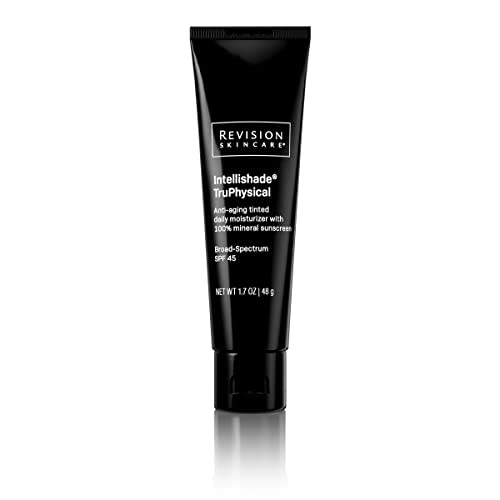
Revision Skincare Intellishade TruPhysical $ at Amazon
Revision Skincare Intellishade TruPhysical $ at Dermstore
Revision Skincare Intellishade TruPhysical $ at Walmart
ColorScience Sunforgettable Total Protection Face Shield
This tinted formula, which comes recommended by Dr. Carmen Castilla, a board-certified dermatologist at the New York Dermatology Group in Manhattan, has iron oxide in it, so it should help block harmful UV rays and the visible light rays that can trigger melasma. It comes in three shades, all of which have SPF 50 and are water-resistant up to 40 minutes, according to the brand.
ColorScience Sunforgettable Total Protection Face Shield
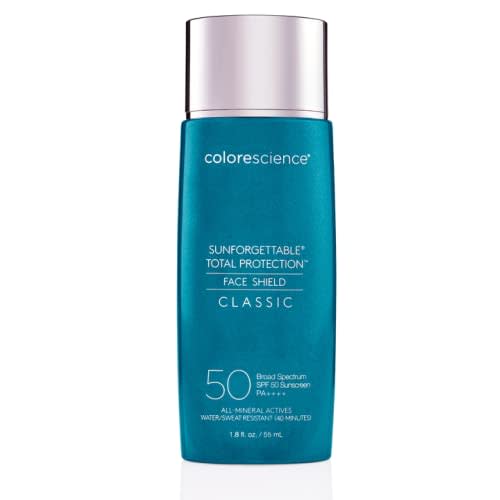
ColorScience Sunforgettable Total Protection Face Shield $ at Amazon
ColorScience Sunforgettable Total Protection Face Shield $ at Walmart
ColorScience Sunforgettable Total Protection Face Shield $ at Dermstore
Neutrogena Purescreen+ Mineral UV Tint Face Liquid Sunscreen
For a tinted sunscreen at a lower price point than other options on our list, Ilyas recommends this Neutrogena broad-spectrum SPF 30 because it’s particularly good for skin of color. “Most of the tinted sunscreens out there have only one tint that is [supposed to be] one-size-fits-all, which we know doesn’t work,” says Ilyas. This formula which comes in four hues, also has vitamin E to help prevent hyperpigmentation triggered by free radical damage. Plus, it doesn’t leave behind a white cast, according to the brand.
Neutrogena Purescreen+ Mineral UV Tint Face Liquid Sunscreen
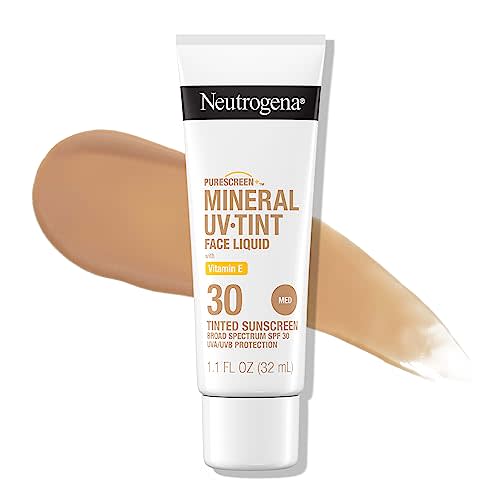
Neutrogena Purescreen+ Mineral UV Tint Face Liquid Sunscreen $ at Amazon
Neutrogena Purescreen+ Mineral UV Tint Face Liquid Sunscreen $ at Ulta
Neutrogena Purescreen+ Mineral UV Tint Face Liquid Sunscreen $ at Neutrogena
Best moisturizer
La Roche Posay Toleriane Double Repair Face Moisturizer
Supporting the health of the skin barrier is key to addressing any skin concern, including melasma — that’s why Castilla recommends La Roche Posay’s Toleriane Double Repair Face Moisturizer. It’s formulated with ceramides, which function like mortar between skin cells to strengthen the skin barrier. This formula also has niacinamide, which can inhibit the production of pigment and block the transfer of melanin between cells so you have less proliferation of that pigmentation, says Ilyas.
La Roche Posay Toleriane Double Repair Face Moisturizer
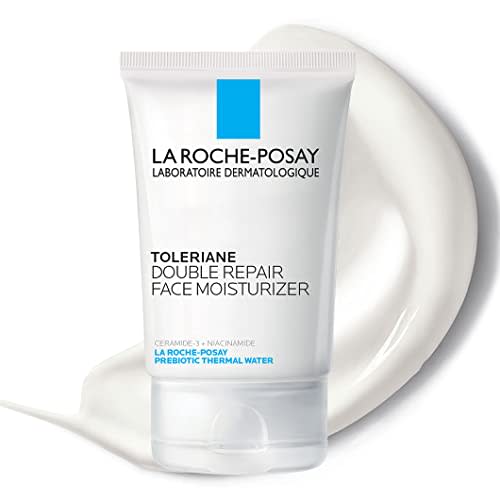
La Roche Posay Toleriane Double Repair Face Moisturizer $ at Amazon
La Roche Posay Toleriane Double Repair Face Moisturizer $ at La Roche Posay
La Roche Posay Toleriane Double Repair Face Moisturizer $ at Target
Best serums
Tru Alchemy Spot Check
Serums are vehicles that deliver an active ingredient to your skin, says Ilyas. You can use them in the morning or at night, layer them under moisturizer or use them alone. When it comes to the best serums for melasma, our experts recommend looking for formulas that include several active ingredients so you can target the hyperpigmentation from all sides. “Spot Check has a lot of actives that are all focused on pigmentation,” says Ilyas. Specifically, it has niacinamide and white shitake extract to help brighten dark spots and even your complexion, according to the brand.
Tru Alchemy Spot Check

Tru Alchemy Spot Check $ at Amazon
Tru Alchemy Spot Check $ at Tru Alchemy
SkinMedica Lytera 2.0 Pigment Correcting Serum
“SkinMedica Lytera has been around for a really long time and has been shown to be pretty awesome in improving melasma and pigment,” says Nazarian. It has tranexamic acid, which many dermatologists recommend for pigmentation disorders, since it works as a brightening agent. (In the case of melasma, it works to brighten dark spots by curbing the production of melanin in skin and by blocking post-inflammatory hyperpigmentation.) One important caveat: If you are pregnant, you have to get it OK'd by your OB-GYN since it can cross the placental barrier (meaning it may be absorbed through the skin into your bloodstream where it can then reach the fetus), says Nazarian. While it hasn’t been linked to birth defects, there’s not enough data to guarantee its safety, which is why some doctors recommend avoiding it, she says.
SkinMedica Lytera 2.0 Pigment Correcting Serum
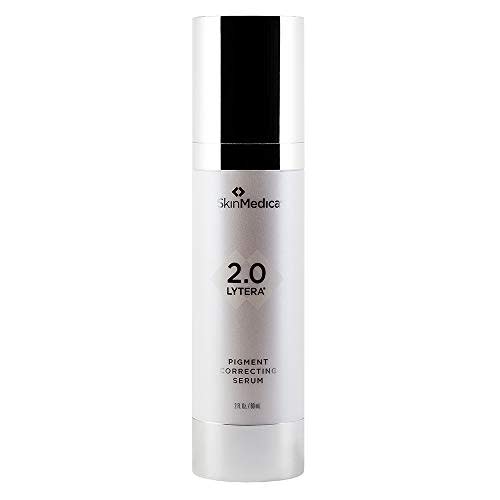
SkinMedica Lytera 2.0 Pigment Correcting Serum $ at Amazon
SkinMedica Lytera 2.0 Pigment Correcting Serum $ at Walmart
SkinMedica Lytera 2.0 Pigment Correcting Serum $ at SkinMedica
SkinCeuticals Discoloration Defense
Castilla recommends this dark spot corrector for its trio of brightening ingredients: kojic acid, niacinamide, and tranexamic acid. The brand recommends applying it twice a day by using three to five drops before a broad-spectrum sunscreen while also limiting your sun exposure while using the product. If you’re pregnant, clear it with your doctor first.
SkinCeuticals Discoloration Defense
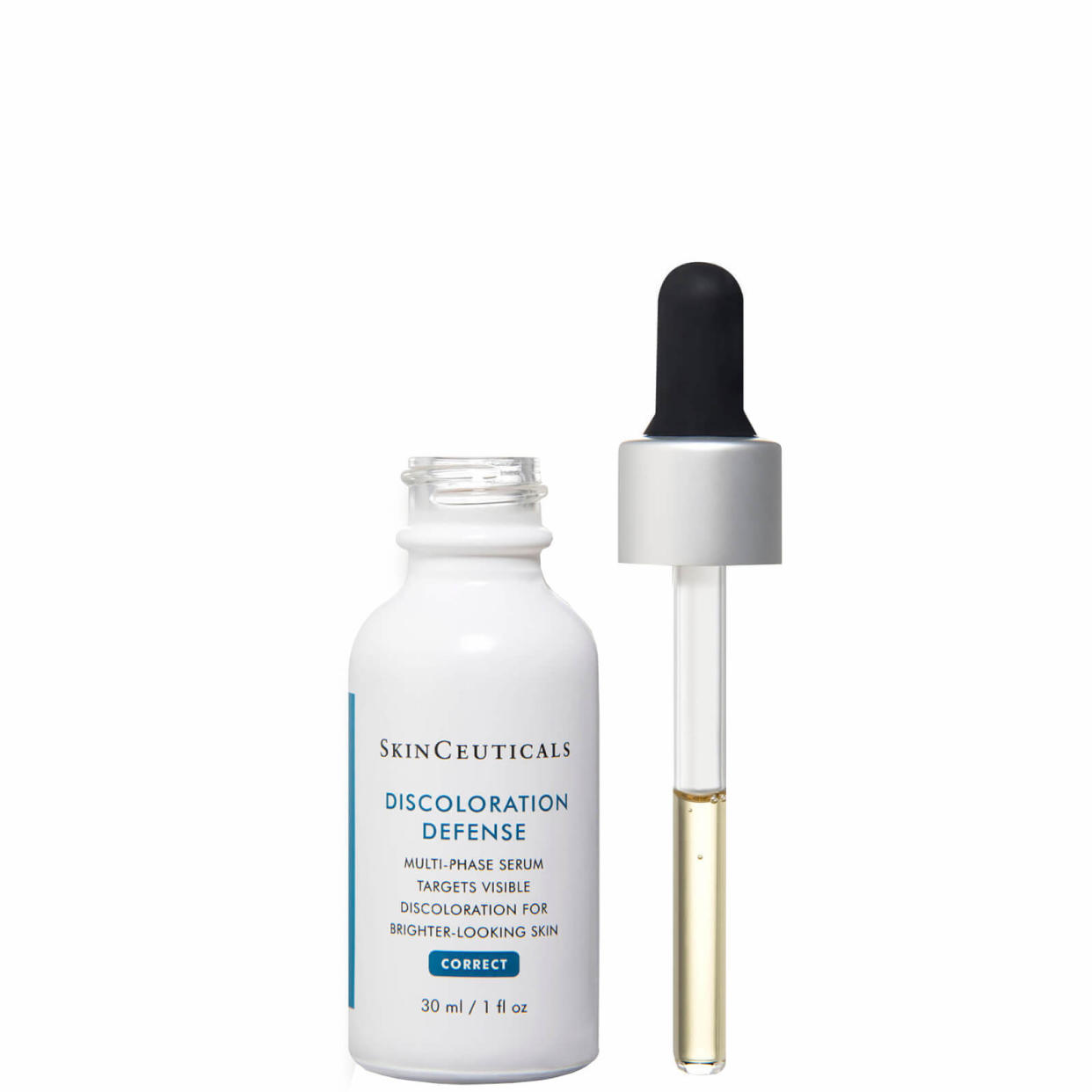
SkinCeuticals Discoloration Defense $ at Dermstore
SkinCeuticals Discoloration Defense $ at BlueMercury
SkinCeuticals Discoloration Defense $ at SkinCeuticals
Paula’s Choice Clinical Discoloration Repair Serum
This repair serum, recommended by Nazarian, has brightening ingredients to treat existing melasma and block the formation of new pigmentation. Niacinamide and tranexamic acid work to brighten dark spots, while bakuchiol, a plant-based retinol alternative, helps even out skin tone, according to the brand. Again, make sure to clear this formula with your doctor if you are pregnant.
Paula’s Choice Clinical Discoloration Repair Serum

Paula’s Choice Clinical Discoloration Repair Serum $ at Amazon
Paula’s Choice Clinical Discoloration Repair Serum $ at Sephora
Paula’s Choice Clinical Discoloration Repair Serum $ at Paula's Choice
SkinBetter Science Even Tone Correcting Serum
This pregnancy-safe option comes recommended by Nazarian since it brightens without the use of hydroquinone, another ingredient that you should avoid during pregnancy, she says. Instead, it has hexylresorcinol and kakadu plum extract (vitamin C), which are both pregnancy-safe skin-brighteners, according to the brand. You can use it day and night — just apply it to clean, dry skin and use it in combination with SPF for the best benefit, according to Skin Better Science.
Skinbetter Science Even Tone Correcting Serum
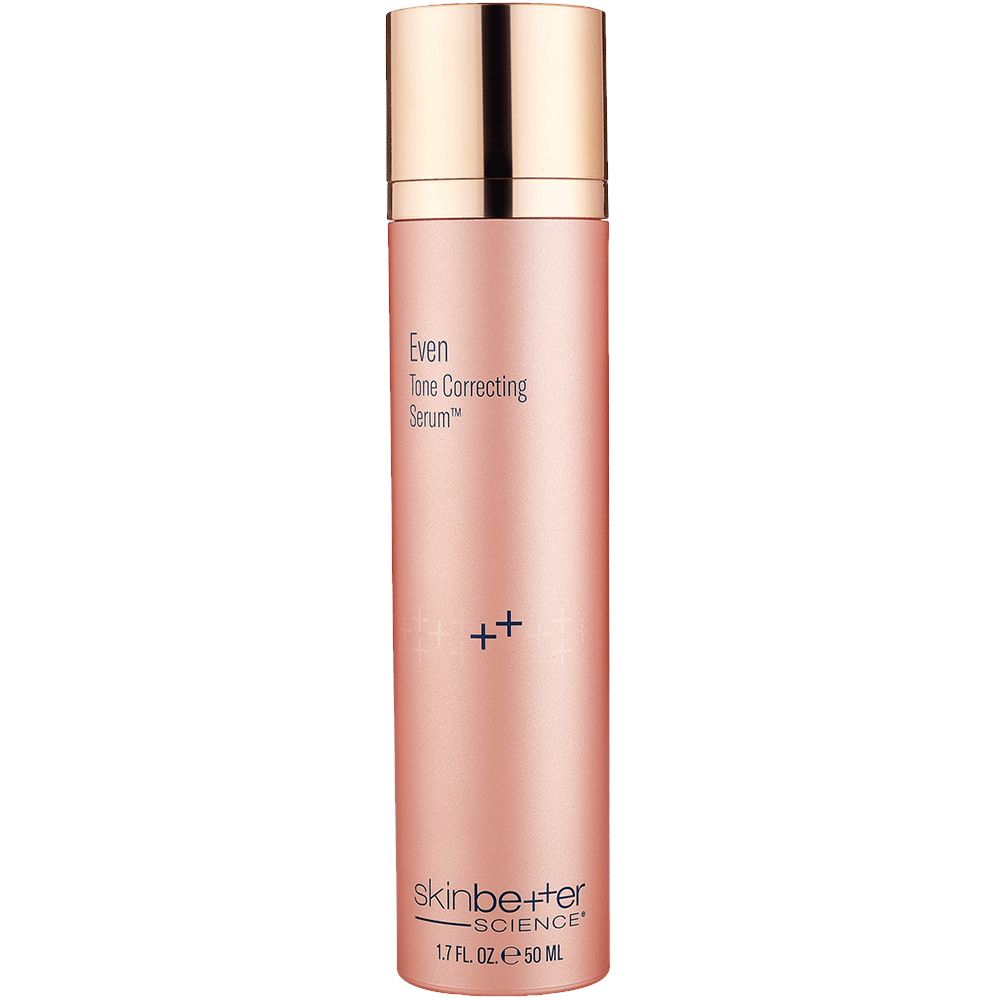
Skinbetter Science Even Tone Correcting Serum $ at SkinBetter
The Ordinary Azelaic Acid Suspension 10% Exfoliator
Azelaic acid, which this product is formulated with, is a great over-the-counter (and pregnancy-safe) alternative to prescription hydroquinone, an old-school treatment for melasma. “[Azelaic acid] blocks the enzyme in the skin that triggers pigmentation,” says Ilyas. Look for a formula with 10% azelaic acid, she says, like this exfoliator from The Ordinary. You can use it as part of your morning or evening skincare routine, though you should not use it at the same time you use vitamin C, retinol or peptides to avoid irritation, according to the brand’s website.
The Ordinary Azelaic Acid Suspension 10% Exfoliator

The Ordinary Azelaic Acid Suspension 10% Exfoliator $ at Sephora
The Ordinary Azelaic Acid Suspension 10% Exfoliator $ at Ulta
The Ordinary Azelaic Acid Suspension 10% Exfoliator $ at The Ordinary
Best retinol
Neutrogena Rapid Tone Repair Retinol and Vitamin C Dark Spot Corrector
“Whenever you irritate melasma, it has the potential to get worse,” says Castilla. If you want to introduce a retinol to your skin care routine, go slow and look for a gentle formula to prevent your melasma from getting worse. Our experts recommend Neutrogena’s retinols as some of the most gentle formulas on the market. Nazarian likes this option because in addition to being gentle, it contains antioxidant vitamin C to target hyperpigmentation.
Neutrogena Rapid Tone Repair Retinol and Vitamin C Dark Spot Corrector
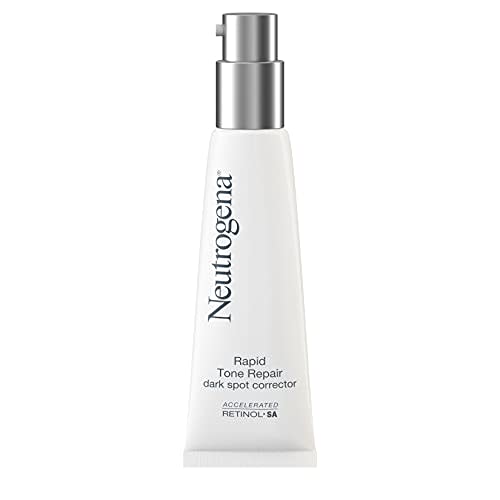
Neutrogena Rapid Tone Repair Retinol and Vitamin C Dark Spot Corrector $ at Amazon
Neutrogena Rapid Tone Repair Retinol and Vitamin C Dark Spot Corrector $ at Target
Neutrogena Rapid Tone Repair Retinol and Vitamin C Dark Spot Corrector $ at Walmart
What is melasma?
“Melasma is actually a pretty complex skin condition and we find out more about it every year,” says Nazarian. It typically presents in women and people with darker skin tones and is often triggered by pregnancy or hormonal birth control pills. Melasma often has a mask-like appearance, showing up in a freckle-like pattern of brown or grayish spots on the nose, cheeks and chin (though it can also appear on the forearms or neck), according to the American Academy of Dermatology.
Melasma occurs when melanocytes, the cells in the skin that create pigment, interact with an external trigger — most commonly hormones, heat, and light.
How to treat melasma
One way to prevent and treat melasma is to target melasma triggers. Another is to block an enzyme in the skin called tyrosinase. “This enzyme is actually what’s responsible for triggering pigmentation in the skin,” says Ilyas. “If we can block that enzyme from working, then maybe you could have less pigment as a result of it,” she says. Antioxidants including vitamins C and E, niacinamide, and retinol do this well. “Retinol does so much for pigment. It not only blocks pigmentation in the skin, it can actually even out your complexion,” says Ilyas. “It’s very good at identifying what’s discolored and what’s normal and evening out the complexion,” she says.
Maintaining the health of your skin barrier — by keeping your skin well hydrated and free of cracks and dry patches — can also help address the appearance of hyperpigmentation, according to Castilla.
How to prevent melasma
Experts stress that treatment for melasma can only truly be effective if you’re also working on melasma prevention. There is likely a genetic predisposition to melasma, but that doesn’t mean you’re doomed to a lifetime of hyperpigmentation from the moment you encounter a melasma trigger, says Castilla.
The single most important thing you can do to prevent melasma is wear sunscreen every day, says Castilla. “And it’s not just regular old sunscreen. You typically want to have a physical blocker like zinc oxide or titanium dioxide,” she says. Not only will you get better broad-spectrum UV protection, physical blockers also obstruct visible light.
How to shop for melasma treatments
When shopping for over-the-counter melasma treatments, experts recommend looking for products with pregnancy-safe formulas, broad-spectrum SPF and active ingredients that target pigmentation. Below, we highlight the most important things to consider when shopping for a melasma treatment.
Always opt for tinted or mineral sunscreens. Wearing SPF every day protects your skin from UV rays that cause sun damage and lead to skin cancer. For anyone with melasma — it’s especially crucial because both UV rays and visible light rays trigger the production of melanin, which can cause hyperpigmentation like melasma. When shopping for sunscreens, our experts stressed the importance of looking for tinted formulas since they typically have iron oxides, the ingredient that blocks visible light in addition to UV rays. Mineral sunscreens (formulated with zinc oxide) also block visible light. Tinted mineral sunscreens can also help eliminate the white cast that has traditionally plagued mineral sunscreens and is particularly frustrating for people with darker skin tones.
Introduce new ingredients slowly. Irritation can exacerbate melasma, so if you’re introducing a new ingredient into your skin care routine such as retinol, look for a gentle formula and start slow. Begin by introducing the new product one or two days a week and increase your usage from there.
Load up on antioxidants. The best melasma treatments target existing hyperpigmentation and block the formation of new dark spots. Antioxidants like vitamin C not only brighten skin, but also block the formation of an enzyme in the skin called tyrosinase, according to Ilyas, which triggers skin pigmentation. Other hyperpigmentation-fighting antioxidants commonly found in melasma treatments include niacinamide, vitamin E and kojic acid.
Check if formulas are pregnancy-safe. Hormonal changes during pregnancy are believed to trigger the development of melasma (and can also make existing melasma worse), according to the American Academy of Dermatology. However, some of the most effective melasma treatments — namely those that contain hydroquinone and tranexamic acid — aren’t pregnancy safe. If you are pregnant or breastfeeding, be sure to clear your melasma treatment with your doctor.
Meet our experts
At Select, we work with experts who have specialized knowledge and authority based on relevant training and/or experience. We also take steps to ensure all expert advice and recommendations are made independently and without undisclosed financial conflicts of interest.
Dr. Carmen Castilla, M.D., is a board-certified dermatologist at the New York Dermatology Group in Manhattan specializing in both medical and cosmetic dermatology.
Dr. Rachel Nazarian, M.D., FAAD, is a board-certified dermatologist with the Schweiger Dermatology group in New York, whose research includes skin disease treatment.
Dr. Erum Ilyas, M.D., FAAD, is a board-certified dermatologist with the Schweiger Dermatology group in Pennsylvania. Her expertise includes pediatric and medical dermatology and skin cancer treatment.
Why trust Select?
Macaela MacKenzie is a journalist and former Glamour editor who has covered beauty and wellness treatments for over a decade. For this article, MacKenzie spoke to three dermatologists about the best ways to prevent and treat melasma and highlighted their top skin care picks and the rationale behind them.
Catch up on Select’s in-depth coverage of personal finance, tech and tools, wellness and more, and follow us on Facebook, Instagram, Twitter and TikTok to stay up to date.
